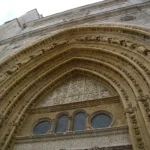Nestled within the heart of Rome, the Vatican Museums stand as a beacon of artistic and historical grandeur. For those planning a visit to Rome, Italy, these museums offer an incomparable journey through centuries of culture, faith, and human creativity. This article illuminates practical information for reaching the museums, tips for timing your visit, insights into their rich heritage, and guidance on tours and reservations. Additionally, discover nearby accommodations and local dining to enrich your pilgrimage to one of the world’s most revered museum complexes.
Table of Contents
Getting to the Vatican Museums: Navigating Rome’s Urban Fabric
Located inside Vatican City, the museums are accessible directly from Rome’s city center by various modes of transport. The most convenient way is via the Metro system: take line A and disembark at Ottaviano-San Pietro station, a short walk from the entrance. Alternatively, several buses connect from central points such as Piazza Venezia and Stazione Termini, Rome’s main train station. For those arriving from Leonardo da Vinci International Airport (Fiumicino), the Leonardo Express train to Termini followed by Metro line A is straightforward.
Walking routes from St. Peter’s Square offer a scenic approach, passing through historic streets echoing with the footsteps of pilgrims and artists alike. The museums’ entrance lies on Viale Vaticano, where queues often form, so allocating extra time is wise.
When to Visit: Timing Your Experience Wisely
Choosing the Best Days and Hours
Early morning visits, just as the museums open at 9:00 AM, tend to be the least crowded. Weekdays from Monday to Thursday usually provide a calmer atmosphere compared to weekends or public holidays. The museums close on Sundays, except for the last Sunday of each month when admission is free, though this day is notably busy.
Seasonal Considerations
Spring and autumn offer mild weather and manageable visitor numbers, allowing for a more reflective experience. Summer, while popular, can bring intense heat and larger crowds, which may detract from the museums’ serene ambiance.
Unveiling the Vatican Museums’ Legacy and Significance
The Vatican Museums are a testament to the Catholic Church’s commitment to preserving and showcasing extraordinary works of art and history. Founded in the early 16th century by Pope Julius II, they house masterpieces spanning classical sculpture, Renaissance paintings, and ethnographic collections. Among the treasures, the Raphael Rooms and Michelangelo’s Sistine Chapel ceiling are paramount, captivating visitors with their narrative depth and technical mastery.
This vast complex reveals the evolution of artistic styles and philosophical thought, offering a window into the confluence of religion, politics, and aesthetics throughout centuries. It is not merely a collection of objects but a curated dialogue between epochs, inviting viewers to contemplate humanity’s creative spirit and its enduring quest for meaning.
If you have time after the Vatican Museums, strolling to the nearby Trevi Fountain lets you see another stunning symbol of Rome’s art and history. Visit the Trevi Fountain to enjoy its beauty and charming local atmosphere.
Essential Visitor Information: Tours and Reservations
Due to the museums’ popularity, booking tickets in advance is strongly recommended to avoid lengthy waits. The official Vatican Museums website provides secure online reservations, including options for guided tours that enrich understanding by narrating the stories behind the art and architecture.
To deepen your visit to the Vatican Museums, consider exploring the Sistine Chapel’s sacred art, nestled within its walls and offering a stunning spiritual complement.
Guided tours vary from standard routes focusing on major highlights to specialized visits exploring lesser-known galleries and archaeological sites within the Vatican. Audio guides are also available for self-paced exploration, allowing visitors to immerse themselves according to personal interests.
Note that certain parts of the Vatican Museums may have restricted access during special events or religious occasions. Checking the official website prior to your visit ensures the most up-to-date information.
Nearby Accommodation: Staying Close to the Vatican
The vicinity around Vatican City offers a range of accommodations, from boutique guesthouses to comfortable apartments. Staying nearby provides the advantage of early access to the museums and the opportunity to enjoy the tranquil early morning atmosphere of Rome’s Vatican district. The area boasts peaceful streets lined with cafés and shops, blending modern hospitality with historic charm.
Savoring Roman Flavors: Local Cuisine Near the Museums
After a day immersed in art and history, savoring local Roman cuisine enhances the cultural journey. Numerous trattorias and osterias near the Vatican serve traditional dishes such as cacio e pepe, carbonara, and saltimbocca alla Romana. These eateries reflect Rome’s culinary craftsmanship, where simple ingredients transform into flavorful experiences.
For a quick bite, sample freshly baked focaccia or sip espresso at a nearby café, soaking in the lively Roman street life. Food markets in the surrounding neighborhoods offer fresh produce and artisanal products, a delight for those interested in gastronomy and urban culture.
After exploring the Vatican Museums, wander through Rome’s lively neighborhoods to taste authentic dishes and enjoy the city’s everyday charm in Step Inside Rome’s Soul.
A Glimpse Beyond the Art: Little-Known Facts and Myths
Many visitors overlook the story behind the Vatican Museums’ layout, which subtly mirrors Renaissance ideas of harmony and proportion. The carefully designed galleries create a flowing narrative, guiding guests through history with unparalleled coherence.
Interestingly, the museums also contain architectural fragments from ancient Rome and Egypt, offering a tactile link between civilizations. The intricate mosaics and delicate frescoes reveal craftsmen’s painstaking dedication, emphasizing the blend of materials and techniques that defines the collections.
One curious myth suggests that Michelangelo painted the Sistine Chapel ceiling lying down; in reality, he worked standing on scaffolding, reaching upward with brushes in hand. This fact highlights the physical demands intertwined with artistic genius.
Official Website for Booking and Information
For secure ticket reservations, detailed visitor information, and updates, consult the official Vatican Museums website: Vatican Museums Official Site.

- 11826 – Vatican – Chiaramonti Museum (3482086595) by xiquinhosilva on Wikimedia Commons – cc by 2.0
